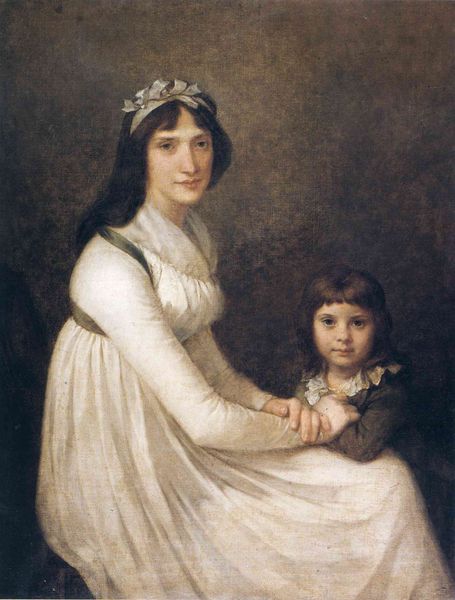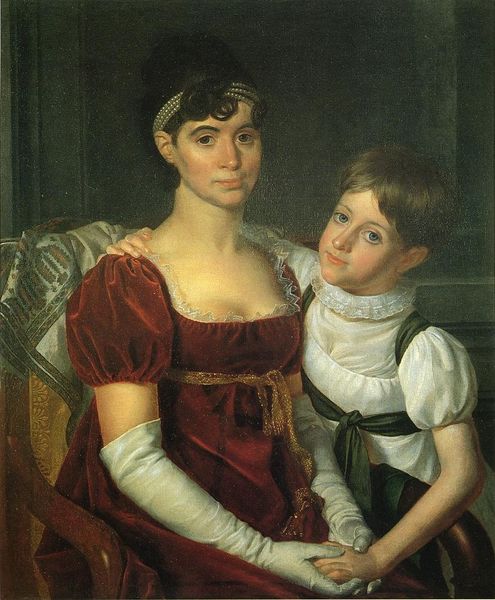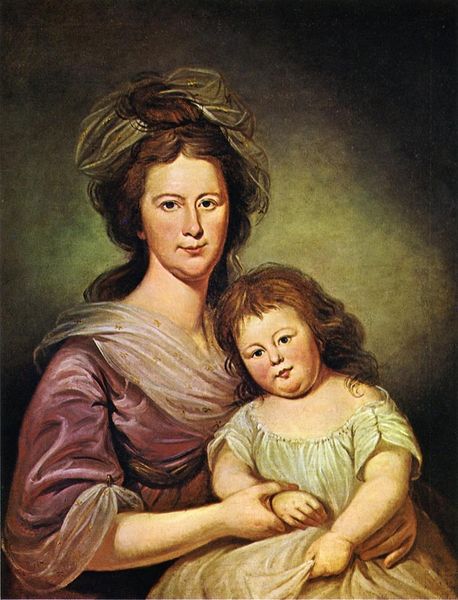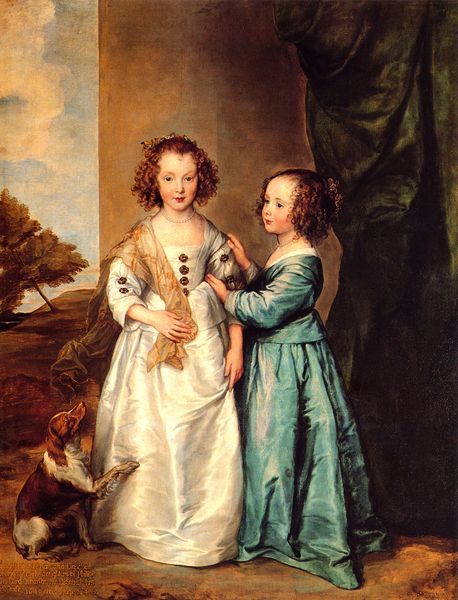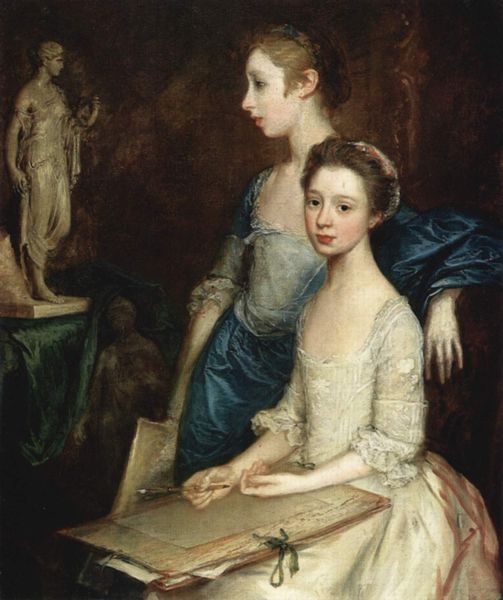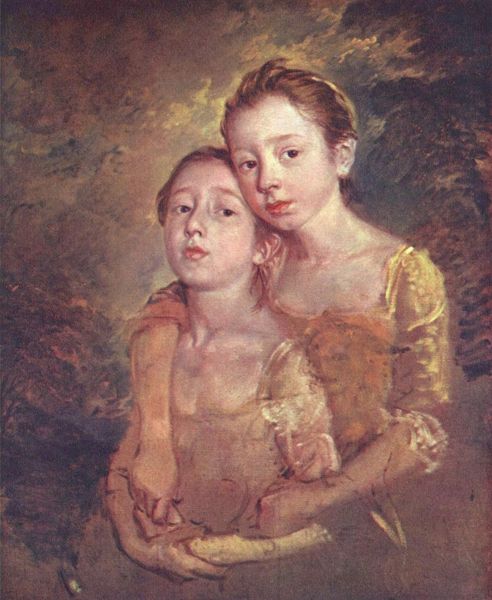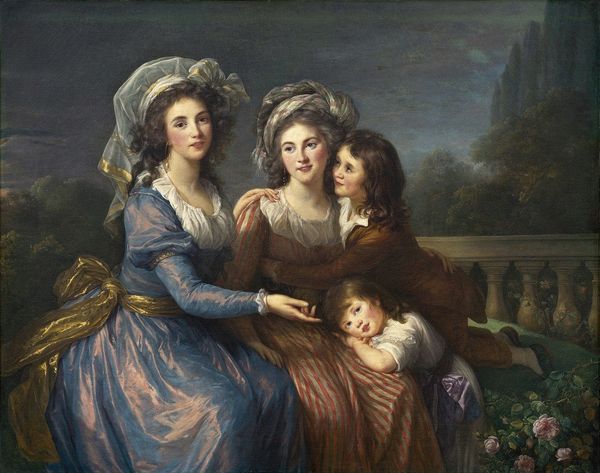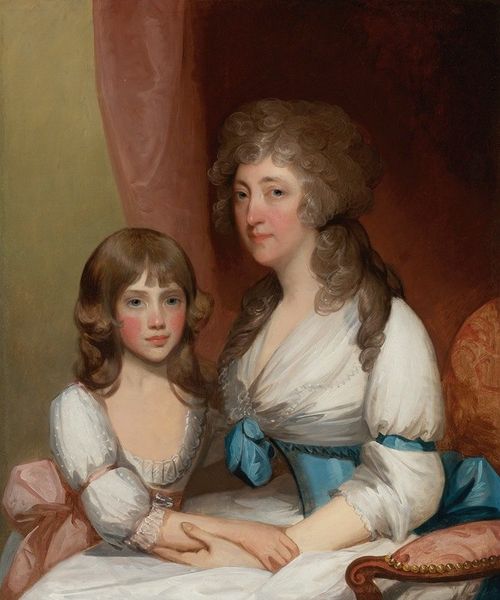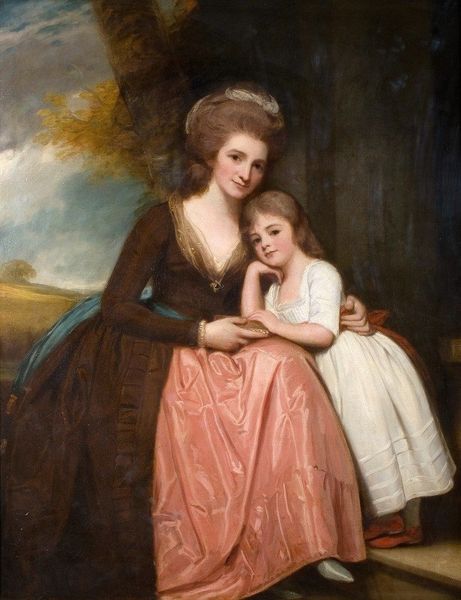
Dimensions: 123 x 159 cm
Copyright: Public domain
Editor: Here we have Angelica Kauffmann's "Countess Anna Protassowa with niece," painted in 1788. It's an oil painting currently residing in the Hermitage. It feels very posed and formal, but also quite tender, doesn't it? What do you see when you look at it? Curator: It's tempting to read this as a straightforward portrait of aristocratic femininity, but Kauffmann, as a woman artist in the late 18th century, provides us with layers. Note how she subtly uses the visual language of portraiture to question established norms around women and power. What does it mean to portray women during a time of social upheaval, especially one who isn't the archetype of royalty? Editor: So, beyond just showing us what these women looked like, it’s also commenting on their roles? Curator: Precisely. Countess Protassova's gaze, direct yet gentle, disrupts the male gaze inherent in so much art history. And consider the niece – her presence is not just ornamental, but hints at the passing on of knowledge and cultural capital between women. The portrait subtly emphasizes female mentorship, traditionally undervalued in historical narratives. How do the accessories – the jewelry, the clothing – contribute to your interpretation? Editor: They suggest status, obviously, but maybe also individuality? The medallion, especially. Is that meant to signal something specific? Curator: Absolutely. That medallion alludes to allegiance, to intellectual or social circles. Kauffmann places these women not simply as beautiful objects but as active participants within their socio-political environment. She gives them agency within the canvas, subtly pushing back against restrictive societal expectations. Ultimately, this isn't just about representation; it’s about resistance through art. Editor: I hadn’t thought of it that way at first. It’s fascinating to consider how art can subtly challenge the status quo. Thank you! Curator: It’s in the quiet subversions that we often find the most powerful messages. There are always ways to resist even in an artwork.
Comments
No comments
Be the first to comment and join the conversation on the ultimate creative platform.


